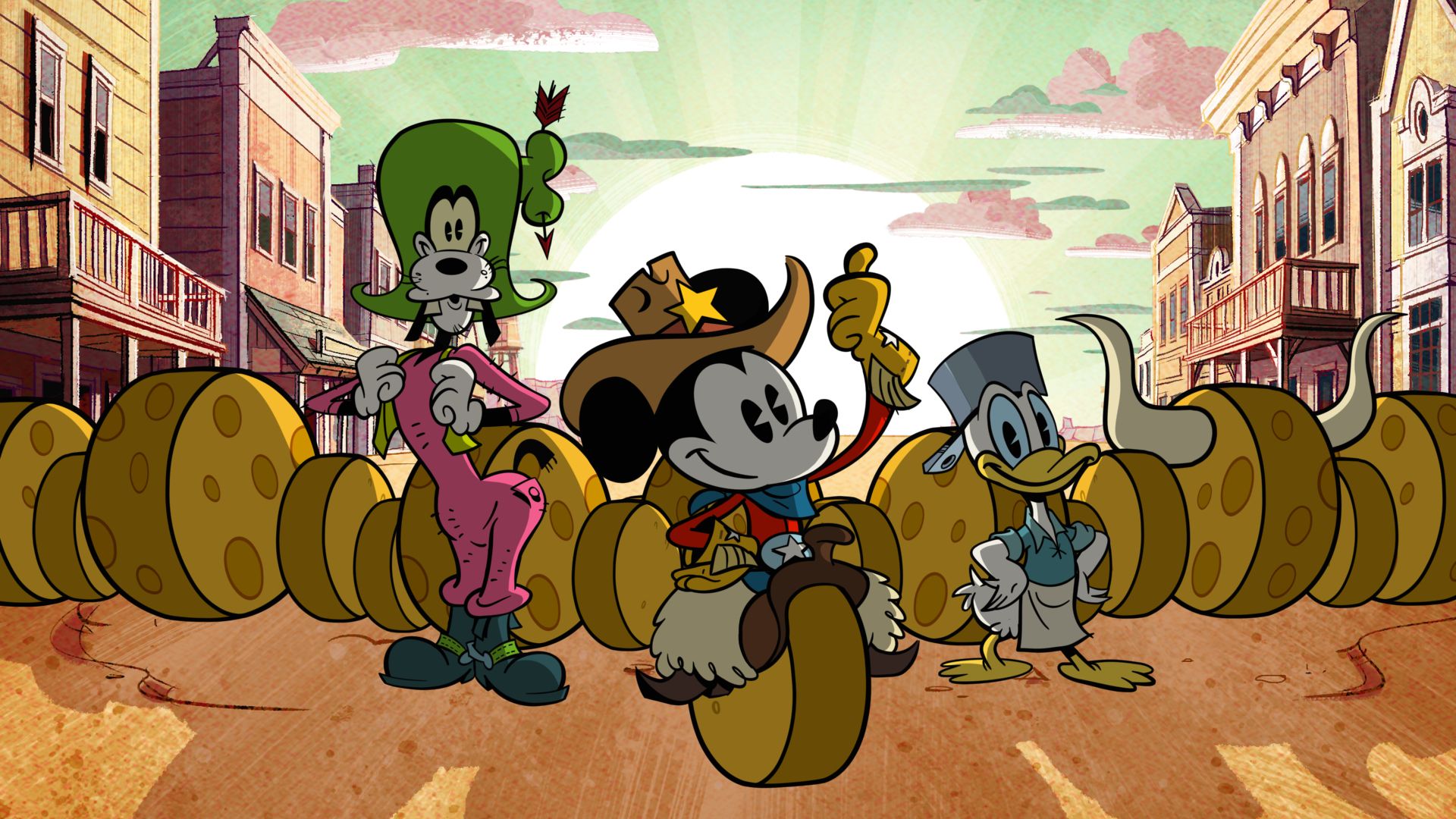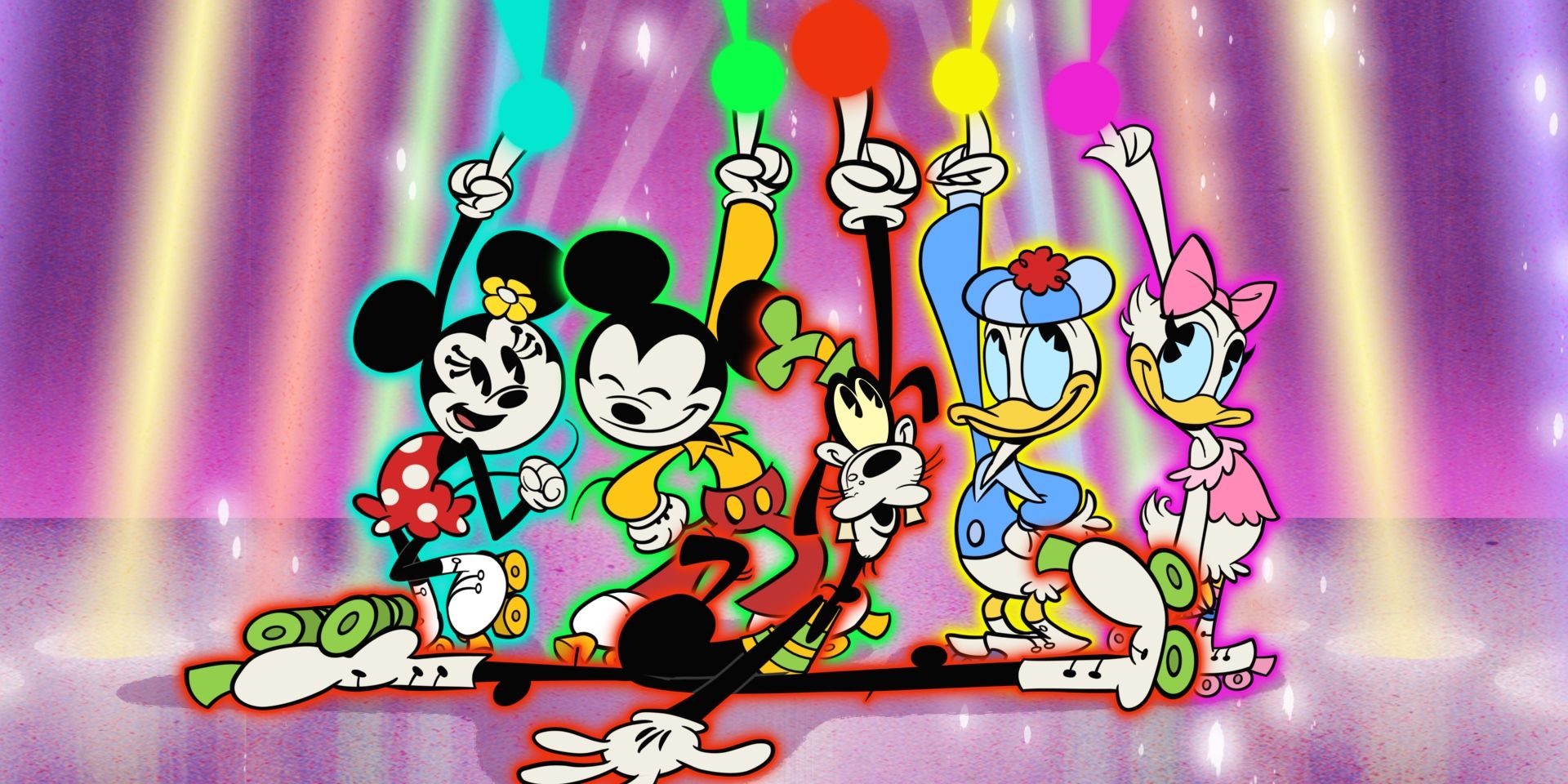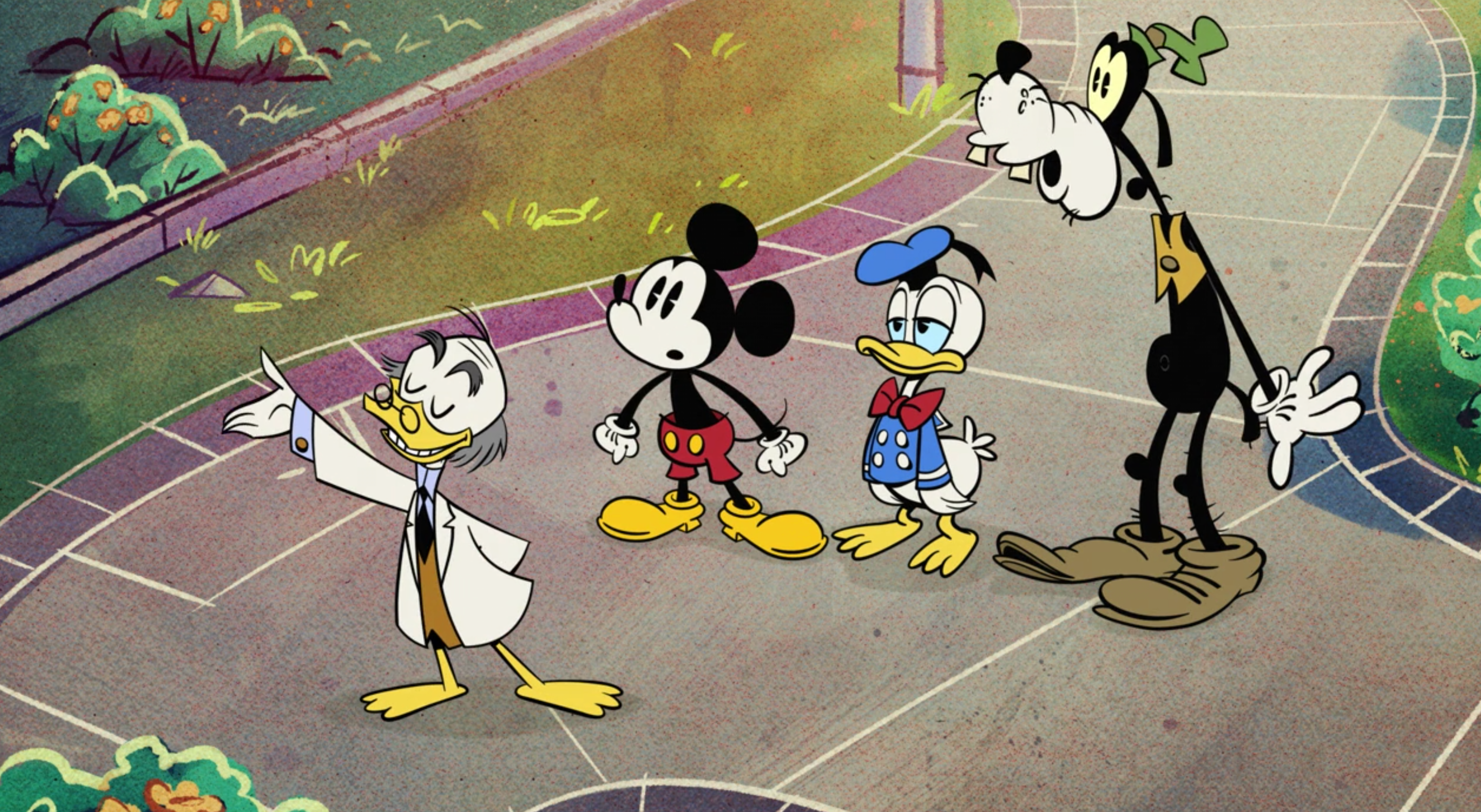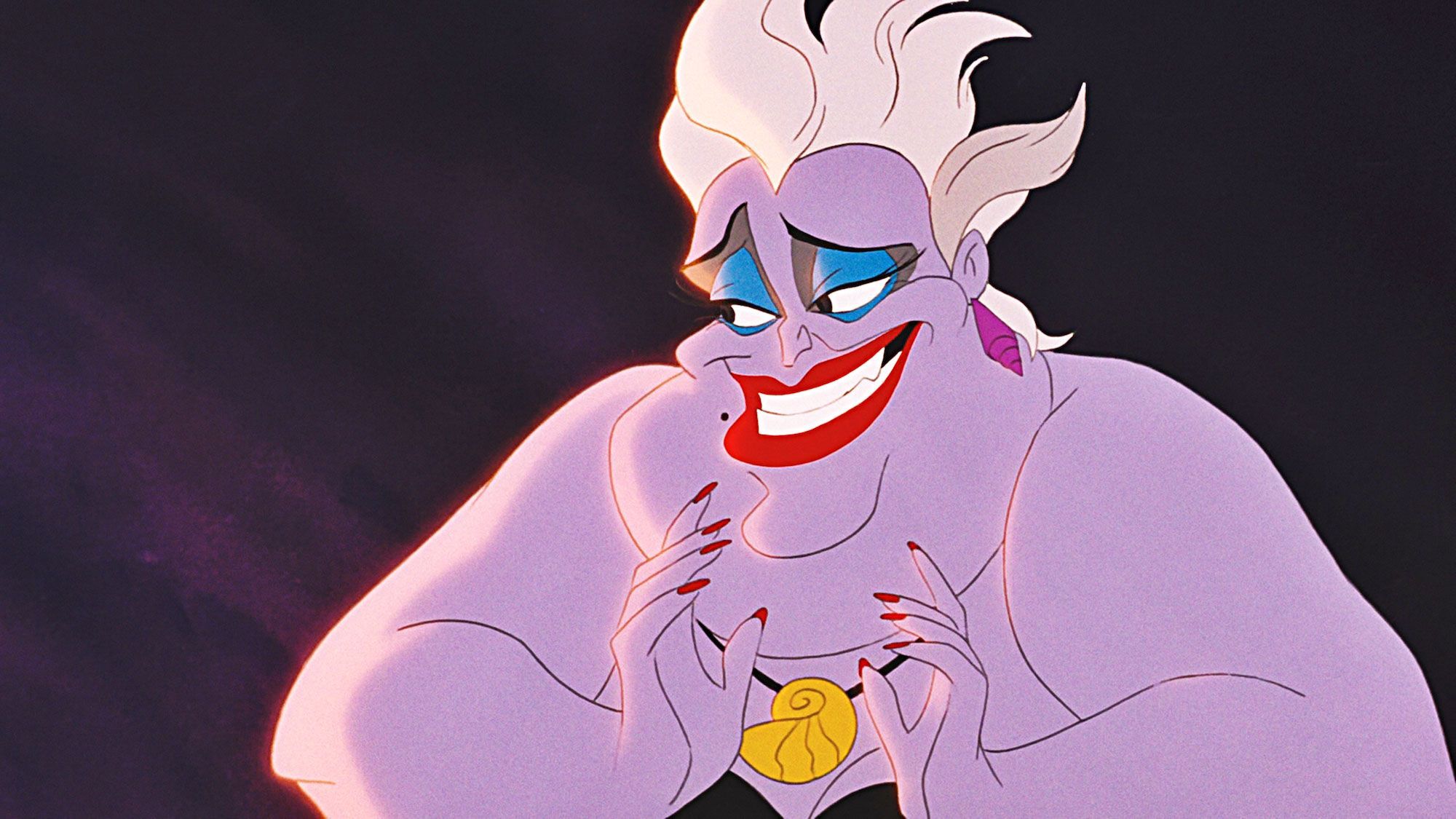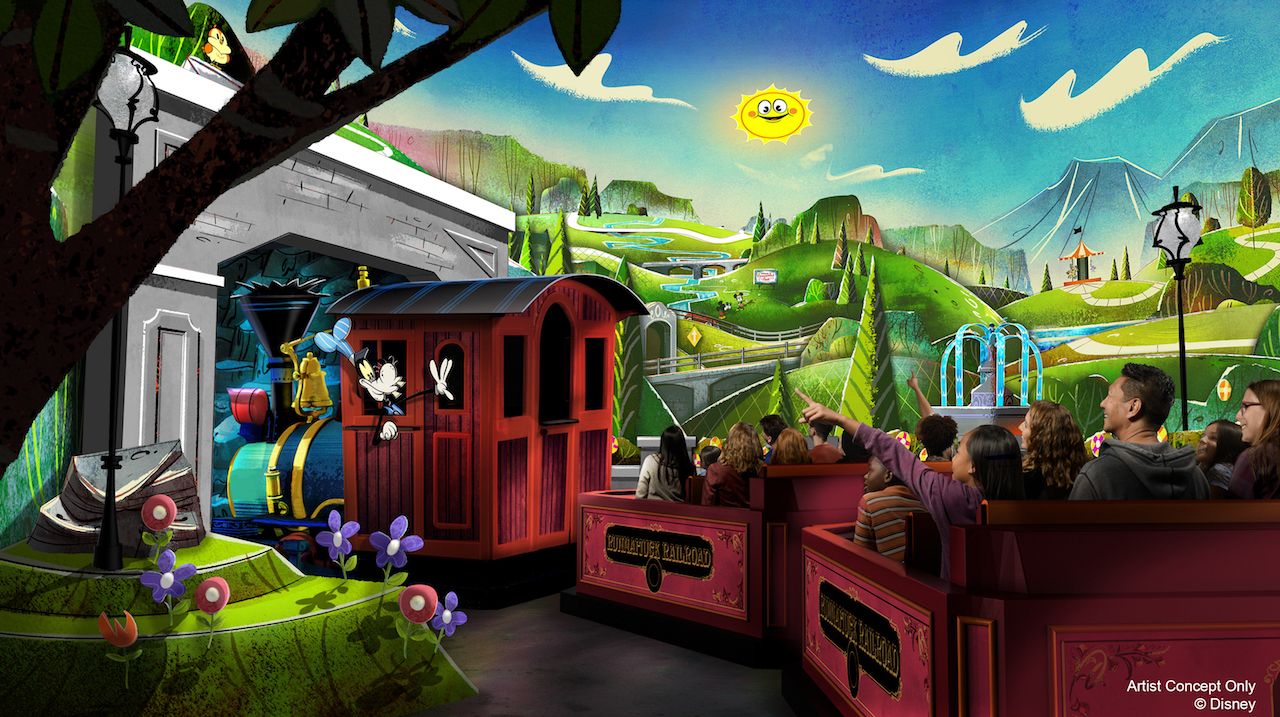Back in 2013, animator Paul Rudish did the impossible – he made Mickey Mouse, who had long ago become an in articulate corporate symbol, a viable character once again. In a series of inventive, energetically animated shorts, he gave Mickey (now voiced by Silicon Valley star Chris Diamantopoulos) a personality. This was a Mickey that got angry and frustrated and lashed out. The shorts took place in far off lands and put Mickey in a variety of extremely cartoon-y scenarios. And they were a huge hit for Disney, revitalizing Mickey Mouse for a new generation and inspiring a hit attraction at Disney’s Hollywood Studios at Walt Disney World in Florida (soon coming to Disneyland too).
And all of these years later, the shorts are still on the air. The latest iteration is The Wonderful World of Mickey Mouse, which just premiered on Disney+. These new shorts are longer and even more colorful, allowing for Rudish and his collaborators to go even further and have even more oversized fun.
We were given the opportunity to chat with Rudish, a longtime collaborator of Genndy Tartakovsky on things like Samurai Jack and the 2003 version of Star Wars: Clone Wars, about all things Mickey Mouse – how the original shorts came to be, whether or not there is ever external pressure about what to include in the shorts, working with Pat Carroll (who reprises her role from The Little Mermaid) in the upcoming roller disco episode, and what it was like bringing Mickey and Minnie’s Runaway Railway to the Disney Parks.
Collider: When were you first contacted about the possibility of taking over these Mickey Mouse shorts and what were your initial thoughts back then?
PAUL RUDISH: Well, I originally was brought into Disney Television to just do some development and to look into the heritage characters, look into the library and the Disney characters and see if there was something I can put a spin on or develop a show out of some of their properties. And I was actually very interested in Mickey Mouse. My love is the 1930s Mickey Mouse cartoons and it's like, well, if they want to make cartoons, what if we use their most famous cartoon character and make cartoons again?
But then I thought, Oh, Mickey's going to be too precious. I don't think they're going to let me do that. Is there a way I could secretly trick them into letting me do a Mickey Mouse cartoon?
And then almost on cue [senior vice president of Disney Television Animation] Eric Coleman came in my office and said, "Hey, I hear are you like Mickey Mouse?" And I felt like I was busted. I was like, "Uh-oh wait, what am I caught?" And at the time Bob Iger had charged all of the departments at Disney to develop something new with Mickey Mouse. And at TVA they're like, "Well, we'd like to put you on this project since you already have an interest in it." And it just started from there and so I did get into my love of the 1930s, rubber hose Mickey, and did a couple of storyboards and pitched those and they were well received and took off.
At that point, Mickey had become an anonymous corporate figurehead and you really gave him a personality again. Was that one of the things that you really wanted to do?
RUDISH: I don't think it was necessarily conscious that I wanted to do that more so than I really loved the cartoons from the '30s and I just thought that, that's naturally the way that we can do Mickey Mouse. I didn't think there was anything subversive about taking a page from the 1930s playbook, it's like that seems perfectly natural and if we're going to make Mickey Mouse cartoons, let me think about the ones I like, and let's try to follow suit in that style of humor.
And so I think I just approached it naturally, not really thinking that it was so out there or a change of pace, it was just like, "Oh yeah, I like these kinds of cartoons. Let's make more like this."
These shorts are very bold stylistically, including your use of music. Did you ever come up to any guard rails about any of that stuff or were you just given free rein?
RUDISH: Surprisingly, there were no guard rails. The folks at Disney were very encouraging about the direction in the way it was going and yeah surprisingly very little safety net. Not a lot of roadblocks, hardly any, to tell you the truth. Again, people at the company were very supportive of where it was going and it kept on going.
Did you ever think you would still be doing them all these years later?
RUDISH: It's funny. We just kept doing them and kept doing them and it felt normal and then you get your head out of your office and you go, "Wait a minute, we've been doing this for nine years now?" It feels like maybe two or three, it's just become a time warp.
Can you talk about the response to this version of the character, since for a new generation this is what they respond to as Mickey Mouse?
RUDISH: Well, I mean, again usually I'm just had my head down in my desk and it's just the process, the day-to-day fun of working with my artists and lots of great people. It just feels like a very natural kind of thing, very comfortable.
But then you step out into the world and then you go, "Whoa, wait a minute. Oh, I forgot. This is Mickey Mouse, he's a big deal." I thought he was just a friendly cartoon character who was a friend of mine, but then I go, "Oh wait, no, he's a friend of the world and oh my gosh, he's all over the place."
It makes you reel a little bit and yeah, I end up feeling very honored after the fact that we've been able to just shepherd one of the world's favorite characters in a very popular way. To see audiences all around the world really responding to these, is quite flattering and very odd. Because when we're working on it, it's very comfortable and feels very personal. You get reminded that the world is watching. Oh, wow. I forgot.
Can you talk about these new shorts? Because they are a little different. They’re a lot longer and they have a different thematic grouping, right? (Earlier batches have been based on international locations.)
RUDISH: Well, with the new shorts for Disney+, they were very much staying in the same sense of humor and style, the animation and all of that. But in the three-and-a-half-minute shorts we had done previously, we found that we had to trim everything down and make the stories very, very tight and very Mickey-centric and often Mickey was his own foil. He would fall into a problem of his own making and then find his way out but with the longer format, now we can even get more of the characters from the Fab Five. We can have more opportunities to get our great dynamic of Mickey, Donald, Goofy in some situations, screwing things up. We have more opportunities to have an actual antagonist. Pete and Mortimer will both show up as an actual villain to the story. We have more room for different points of view from different characters instead of always having Mickey being the singular focus.
And so that's been fun to be able to play with the other characters more, get their voices, get their opinions in on it. And schematically for the season, we were looking at setting certain stories in what could possibly be the lens of Disneyland. There's a Frontierland episode, a Fantasyland episode, a Tomorrowland, so borrowing those kinds of scenes this time. And more genre pieces in this go around.
Can you talk about working with Pat Carroll from The Little Mermaid on the roller disco installment? What was that experience like for you?
RUDISH: It's funny, it was done remotely. Our voice director and a sound engineer flew out to Cape Cod, I believe, where she currently lives and we did a phone patch recording. They went out to her house, set up the mic and so we were on the phone getting her lines. She was great and was so funny and she could still do the cackle and yes, she was just really out there. I didn't get to interact with her personally, but yeah, she had some salty jokes that she could say off-mic and yes, she was a delight.
As the prominence and level of exposure of these shorts grows and the importance of them within Disney as a corporation intensifies, do they ever lean on you to highlight some aspect of the parks or synergy or something like that? Or are they ever like, “We would really love it if we could highlight Little Mermaid because we're putting it back out on DVD,” or something like that?
RUDISH: Not really. We don't really get a lot of requests for synergistic tie-ins or anything like that per se. Earlier there were requests for certain locations, like when we were doing the international-flavored ones, where we would set ones in different countries. We would even get requests based on "Disney stuff is really popular in this particular country, is there a way you guys could be more in country X?" And so we would look into it and we would try to develop a story that would take place in that country. This season hasn't really been focusing on that. We haven't really gotten any requests like that.
Is there any endpoint that you see the Mickey shorts coming to, or is this something that could go on for years and years?
RUDISH: I certainly think Mickey can go on for years and years, it's up to Disney and what they want to do with him. He certainly has the stamina to keep going.
Are there any characters from the Disney stable that you wish you could use and maybe haven't been able to, or haven't found a place for in the shorts that you are really still looking to play with?
RUDISH: Hmm.
You haven't done an all-out Oswald installment yet, have you?
RUDISH: No. No. I like that we have the ability to dip into anyone, any of the characters in the entire library. And we just play it by ear and go, "Who's going to be the silliest cameo at this particular moment?" So not necessarily, “Do I really want to get Peter Pan in there?” As much as I love Peter Pan and some of my favorite movies. I'm not like gunning to go, "How do we sneak in a Peter Pan joke?" We let those jokes find themselves organically as we go.
What was it like working on the Mickey and Minnie’s Runaway Railway attraction, and how it was seeing your show in dimensional life in Florida and soon in Disneyland?
RUDISH: Getting to collaborate on Runaway Railway was a dream come true. I always wanted to grow up to be Marc Davis and so, yeah it was a fabulous experience getting to go behind the scenes at WDI, be there from the inception of the project, brainstorming on gags and tone. And then finally seeing how they could engineer these things to actually work practically was fascinating.
And then our team produced the two-dimensional animation in the ride. So I was aware of the entire process all the way through, but then when we finally got to fly out to Florida and check it out when it opened, it was a whole other thing. It was like, I had never seen anything about it before, even though I've been working on it for three years. The final product was so amazing and unique. It was a treat to be able to do that.
The Wonderful World of Mickey Mouse is now streaming on Disney+.

